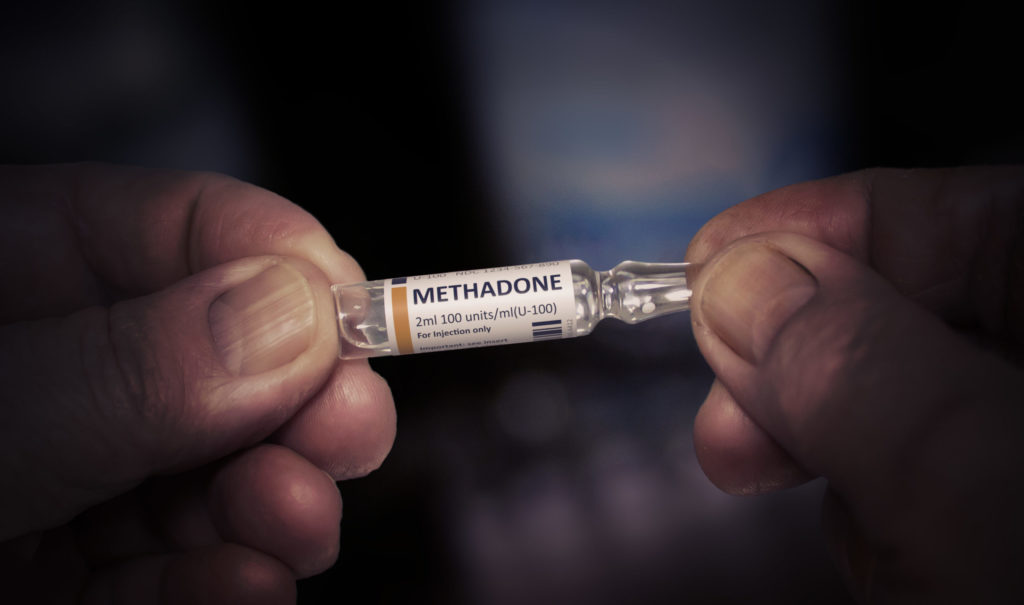How Long Does Methamphetamine Stay in the Body?

Methamphetamine, also known as crystal meth or simply meth, is an illicit stimulant that causes a rapid and intense high. Although the high only lasts a few minutes, it can remain in the body for several days and leave lasting long-term effects.
How meth works
Meth is a stimulant, which means it affects the central nervous system by flooding the brain with dopamine, the neurotransmitter responsible for feelings of pleasure and reward. Meth is particularly addictive for two reasons: the brain wants to chase that massive rush of dopamine to be rewarded even further, and the high itself is rather brief so the user may continuously use meth to avoid coming down.
Because meth provides the brain with an artificial source of dopamine, it can cause the neurotransmitter to fire abnormally. It may then be difficult for the brain to produce dopamine normally without the presence of meth.
How long does methamphetamine stay in the body?
How long meth will physically stay in the body can depend on a few different factors, like the individual’s height and weight, how much meth has been used, how frequently meth has been used, how the meth was used, and how well the individual’s liver and kidneys are functioning. In general, the high produced by meth is at its peak for the first 15 to 30 minutes, can last for up to 14 to 16 hours, and wears off after that. Withdrawal symptoms typically last for two weeks or so but can vary depending on individual factors.
Meth is dangerous, however, because it remains in the system and can affect the body long after the stimulating effects have worn off. For this reason, meth can have both short-term and long-term effects on the brain, heart, skin, internal organs, immune system and body as a whole.
In the short term, meth use can cause distressing physical and mental symptoms. Coming down from the high from meth can lead to – irritability, erraticism, depression, hallucinations, panic attacks, insomnia, sometimes for days at a time. There is also the rapid depletion of the brain’s natural supply of dopamine and serotonin, hallucinations of bugs crawling on the skin, leading to compulsive skin-picking. Paranoia and clouded judgment creep in, leading to loss of inhibitions and impaired or increased risk tolerance.
Unique from other substances, meth has a particular impact on the skin, including, – dull skin, open sores, especially near the mouth that do not heal easily, unhealthy appearance, the appearance of rapid aging, severe acne that does not heal easily and extreme itching. The body and its components can quickly be affected once an individual has started using meth, and they may experience – high blood pressure, increased heart rate, strong feeling of pounding in the chest and neck due to heart palpitations, rapid unhealthy weight loss, dangerously high fever, dental decay, red and swollen gums, loss of appetite, convulsions and seizures, compulsive teeth grinding, bacterial, viral and fungal infections, tremors and muscle twitches and poor personal hygiene.
The high that meth causes are relatively short, but excessive use of the substance can have potentially dangerous and permanent long-term effects. Because of the way meth affects how neurons and neurotransmitters fire in the brain, long-term use of meth is potentially linked to Parkinson’s disease; meth psychosis, which can include hallucinations and paranoia and persist even after an individual has quit using meth; brain damage; depression; memory loss; cognitive impairment; increased risk of stroke; and inability to feel pleasure. Over time, the skin can lose its elasticity as a result of restricted blood flow, and scarring will begin to surface as a result of acne and picking at the skin.
Long-term meth use can also potentially lead to long-term health complications, including – severe heart disease and heart failure, heart attacks even after an individual has quit using meth, chronic high blood pressure, arrhythmia or irregular heartbeat, high cholesterol, cardiomyopathy, damage to the liver, kidney and lungs as a result of prolonged restricted blood, damage to blood vessels in the brain and throughout the body, death of bowel tissue as a result of restricted blood flow to the bowel, gum disease and missing skin, hyper-reflexivity originating in the deep tendons, involuntary muscle spasms, malnutrition, decayed and worn-down teeth, pulmonary hypertension and pulmonary edema, increased risk of developing infectious diseases, hepatitis B and C and HIV/AIDS, respiratory and lung disease when meth is inhaled, suppression of the immune system and muscle atrophy.
Once a person decides to quit meth, they will likely experience uncomfortable withdrawal symptoms prior to it being fully detoxed from their system.
Withdrawals from meth can include the following symptoms:
- Exhaustion and fatigue
- Excessive sleeping, often for days at a time
- Depression
- Difficulty with motor skills
- Anxiety
- Low energy level
- Paranoia
- Nausea
- Stomachaches
- Headaches
- Hallucinations
- Increased appetite
- Excessive sweating
- Memory loss
- Fever
- Psychosis
- Intense cravings
- Dehydration
- Difficulty concentrating
- Body aches and pains
- Muscle spasms
- Dry mouth
- Loss of appetite
So, you’re probably wondering: how long will meth stay in my body? Well, the substance itself will leave your system within a couple of weeks after last use and detox, but it can have potentially lifelong detrimental effects.
Pyramid Healthcare offers comprehensive addiction treatment for those struggling with meth addiction. Get help today by reaching out at 888-694-9996.



